Top 10 Poorest Countries In The World 2023
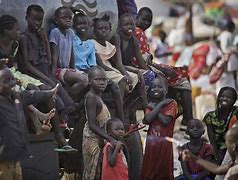
In terms of social and economic development, the world's poorest nations are the least developed. The lack of education, unemployment, and political instability all contribute to economic stagnation.
Top 10 Poorest/Less Developed Countries in the World
- Burundi
- The Central African Republic
- The Democratic Republic of the Congo
- Chad
- Niger
- Mozambique
- Liberia
- South Sudan
- Comoros
- Madagascar
1. Burundi
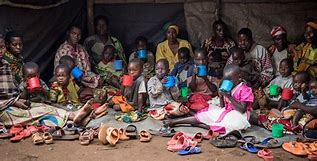
Burundi is currently ranked among the world's poorest nations. The processing of agricultural products is primarily the poor industry. More than 90% of the population is employed by the predominantly agricultural economy, which contributes approximately 35% of GDP. Coffee and tea make up 90 percent of Burundi's earnings in foreign exchange.
From 2006 to the present, Burundi's GDP has grown about 4% annually. However, there are currently hidden flaws, such as a high poverty rate, ineffective legal system, inadequate transportation system, overburdened utilities, and so on. Burundi's economic reform plan is also threatened by a lack of administrative capacity.
2. The Central African Republic

The Central African Republic is well-known for its wealth in diamonds, uranium, oil, gold, and other resources. However, this nation is making some progress despite being the poorest in the world for nearly a decade.
The Central African Republic's economy ranks among the world's least developed. Subsistence agriculture makes up the majority of agriculture, which contributes 55 percent of GDP. This nation's unemployment rate is greater than 30 percent; Over 80% of people live in poverty.
3. The Democratic Republic of the Congo
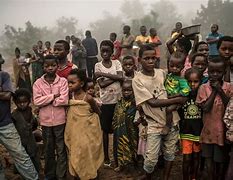
READ ALSO » Top 10 Most Poorest States In Nigeria 2023/2024
The Republic of the Congo's economy is a combination of village agriculture and small-scale manufacturing. However, the mainstay of the economy is the oil-based industrial sector, which contributes significantly to the government's exports and revenue.
In October 1997, following the end of the civil war, the government made it clear that it wanted to push through economic reform, privatization, and a new partnership with international financial institutions.
While the majority of people continue to live below the poverty line, the income distribution is unequal and focuses only on a few groups. This nation's agriculture contributes only 4.4% of GDP. Rice, sugar, corn, vegetables, coffee, cocoa, and peanuts are the main agricultural products. With a daily output of 274.4 barrels, the industry is primarily dependent on oil.
4. Chad
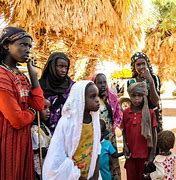
Despite the $4 billion pipeline that connects the country's oil fields to terminals along the coast, Chad is one of the poorest countries in the world because of its poor infrastructure and conflicts. According to World Bank data from 2011, nearly 48% of Chadians live in a state of economic vulnerability due to ongoing conflict and the effects of climate change. The country has a median life expectancy of 55 years and a per capita income of $1,540.
Concern has been working in Chad since 2007, and over the past five years, we have intensified our efforts in a country that is already in a precarious state as a result of added stress that has left 42% of Chadians below the poverty line. We are addressing the humanitarian requirements of displaced people in the Lake Chad region by implementing life-saving health and nutrition programs. In the Sila region of eastern Chad, our work focuses on making communities more resilient to potential disasters.
5. Niger

Due to COVID-19, hunger, the climate crisis, and insecurity, Niger's situation has only gotten worse over time, as has the humanitarian situation. All of these factors make it difficult for millions of Nigerians who live on less than $1.90 per day to break the cycle of poverty. During the pandemic in Niger, lockdowns and border closures have also contributed to an increase in poverty.
Concern has been working in Niger for nearly two decades, assisting communities with a number of difficult development obstacles brought on by violence, population growth, and migration. It is also one of the countries most affected by climate change. Problems with agriculture have resulted in issues with hunger and nutrition over the past two decades, affecting a significant portion of the Nigerien population and putting millions of people's lives in danger. This has resulted in three major crises over the past ten years.
6. Mozambique
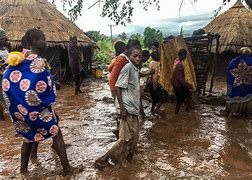
READ ALSO » Top 10 Poorest States In Nigeria
Mozambique's economy has been devastated by 30 years of guerrilla and civil wars. Mozambique is currently one of the world's poorest nations that requires assistance from abroad.
A former Portuguese colony has a lot of land, water, energy, and minerals for growing crops. As a result, the world relies on it as a conduit for international trade. It has announced an average GDP growth rate of over 5% over the past ten years.
However, Mozambique remains one of the world's poorest nations. This nation's population continues to live below the poverty line in large areas.
7. Liberia

The oldest republic in Africa also has a long history of being among the poorest nations. Liberia, which was established in 1822, has been regarded as a settlement for American slaves who were repatriated to Africa.
The majority of Liberians hail from one of 16 indigenous tribes, despite the fact that black slaves who had left North America to settle here were the country's founding members. Consequently, Liberia's political climate remained relatively stable for a considerable amount of time, despite some disagreements between Native Americans and African Americans.
Despite the country's peace and stability since the civil war ended in 2003, the government of Liberia has not adequately addressed serious systemic issues and structural challenges.
8. South Sudan
South Sudan is the youngest nation in the world. It was established in 2011 and is in Africa, bordering six other nations. Despite its abundance of oil, the country has endured years of civil war to become one of the world's least developed regions.
This nation continues to be ravaged by violence. The clashes resulted in the displacement of over 4 million people and an estimated 400,000 deaths.
READ ALSO » Top 10 Countries With Highest Salaries For Teachers In The World 2023
Additionally, South Sudan is regarded as a wealthy nation. However, its economy has been hindered by falling commodity prices and rising security-related costs, with oil accounting for nearly all of its exports. The vast majority of South Sudanese citizens do not work in the oil industry.
9. Comoros

Comoros is a natural paradise with pristine beaches and diverse forest vegetation in the Indian Ocean, north of the Mozambique Channel. However, the economic nightmares of high unemployment, reliance on foreign aid, and technical assistance are so pervasive.
Despite the fact that the lava-covered soil is unsuitable for farming, 800,000 people live off of farming, with tourism, fishing, and forestry also serving as the economy's other mainstays.
10. Madagascar

Madagascar is an island nation of more than 900,000 square kilometers in the Indian Ocean, off the east coast of Africa. For its privatization, this nation participates in the African Development Assistance Act and has received economic assistance programs from the World Bank and IMF. Products from African nations can be brought into the United States duty-free and in any quantity.
However, Madagascar still faces numerous challenges in meeting these organizations' requirements. This island nation's economy is still primarily based on agriculture, which employs 80 percent of the population. One of the 11 nations with GDP per capita below $500 was Madagascar in 2011, when it had a GDP per capita of only $467.
While the cost of goods in this country is doubling, 77% of the population lives in poverty, is illiterate, and receives poor health care.
A developing nation is an emerging nation. The population will be poor and life will be difficult in a country that cannot develop. As a result, in order to ensure that people's lives are more stable, these nations' governments must adopt new policies to boost their economies.
